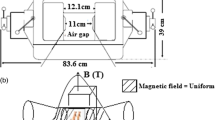Abstract
Miniature replicas modeled after the Great Pyramid of Giza are believed to concentrate geoelectromagnetic energy within their cavities and hence act as antistressors in humans and animals. Although there are not many reports of adverse effects of ‘overexposure’ in the pyramid, subjects have claimed to feel uneasy after certain duration of staying in the pyramid. The present study was aimed to analyze the effects of prolonged pyramid exposure on plasma cortisol level, markers of oxidative damage and antioxidant defense in erythrocytes of adult female Wistar rats. Rats were divided into three groups, normal controls (NC, n=6) that were maintained under standard laboratory conditions in their home cages, pyramid exposed group-2 (PE-2, n=6) & pyramid exposed group-4 (PE-4, n=6) where the rats were housed under the pyramid for 6 hours/day for 2 weeks and 4 weeks respectively. Plasma cortisol and erythrocyte TBARS levels were significantly lower in both PE-2 and PE-4 rats and erythrocyte GSH levels and GSH-Px activity were significantly higher in them as compared to the NC rats. There was no significant difference in the results for these parameters between the PE-2 and PE-4 rats except for erythrocyte GSH-Px activity which was significantly more in the PE-2 rats than in the PE-4 rats. Although these results don’t confirm any adverse effects of prolonged exposure in pyramids, they indicate a possibility of such adverse effects.
Similar content being viewed by others
References
Bhat S, Rao G, Murthy KD, Bhat PG. Effect of housing rats within a pyramid on stress parameters. Ind J Exp Biol 2003; 41: 1289–1293.
Bhat S, Rao G, Murthy KD, Bhat PG. Housing in pyramid counteracts neuroendocrine and oxidative stress caused by chronic restraint in rats. Evidence Based Contemporary and Alternative Medicine 2007a; 4(1): 35–42.
Rao BGS. Biological phenomena within a pyramid model-a preliminary study on wound healing. Ind J Physiol Pharmacol 1997; 41(1): 57–61.
Nayak S, Rao GM, Murthy KD, Somayaji SN, Bairy KL. Pyramid environment reduces the wound healing suppressant properties of dexamethasone in albino rats. Ind J Exp Biol 2003; 41: 645–648.
Nayak S, Rao GM, Murthy KD, Somayaji SN, Bairy KL, Bhat S. Enhanced wound contraction and epithelization period in steroid treated rats: Role of pyramid environment. Ind J Exp Biol 2006; 44: 902–904.
Bhat S, Rao G, Murthy KD, Bhat PG. Influence of alignment of the pyramid on its beneficial effects. Ind J Exp Biol 2007b; 45: 455–458.
Toth M, Nielsen G, editors. Pyramid power, 1st ed. Inner Traditions India Home office, Vermont, USA, 1985.
Gowenlock AH, McMurray JR, McLauchlan DM. Measurement of steroids in body fluids-fluorimetric assays. In: Varley’s Practical Clinical Biochemistry, sixth edition. Heinemann London, 1988: p 814–816.
Jain SK, Mc Vie R, Duett J, Herbest JJ. Erythrocyte membrane lipid peroxidation and glycosylated hemoglobin in diabetes. Diabetes 1989; 38: 1539–1543.
Beutler E, Duron O, Kelly BM. Improved method for the determination of blood glutathione. J Lab Clin Med 1963; 61(5): 882–888.
Paglia DE, Valentine WN. Studies on the quantitative and qualitative characterization of erythrocyte glutathione peroxidase. J Lab Clin Med 1967; 70(1): 158–169.
Tentori L, Salvati AM. Hemoglobinometry in human blood. Methods Enzymol 1981; 76: 707–715.
Czeh B, Welt T, Fischer AK, Erhardt A, Schmitt W, Muller MB, et al. Chronic psychosocial stress and concomitant repetitive transcranial magnetic stimulation: effects on stress hormone levels and adult hippocampal neurogenesis. Biol Psychiatry 2002; 52(11): 1057–1065.
Islamov BI, Balabanova RM, Funtikov VA, Gotovskii YV, Melzerov EE. Effect of bioresonance therapy on antioxidant system in lymphocytes in patients with rheumatoid arthritis. Bull Exp Biol Med 2002; 134(3): 248–250.
Stark NH. What can a pyramid do? In: The first practical pyramid book. Sheed Andrews and McMeel Inc. Kansas, 1977: p29.
Schul B, Pettit E, editors. The secret power of pyramids, 1st ed. Fawcett Gold Medal, CBS publications, New York, 1975.
Author information
Authors and Affiliations
Corresponding author
Rights and permissions
About this article
Cite this article
Bhat, S., Rao, G., Murthy, K.D. et al. Effect of varying durations of pyramid exposure — an indication towards a possibility of overexposure. Indian J Clin Biochem 24, 430–432 (2009). https://doi.org/10.1007/s12291-009-0077-z
Published:
Issue Date:
DOI: https://doi.org/10.1007/s12291-009-0077-z




